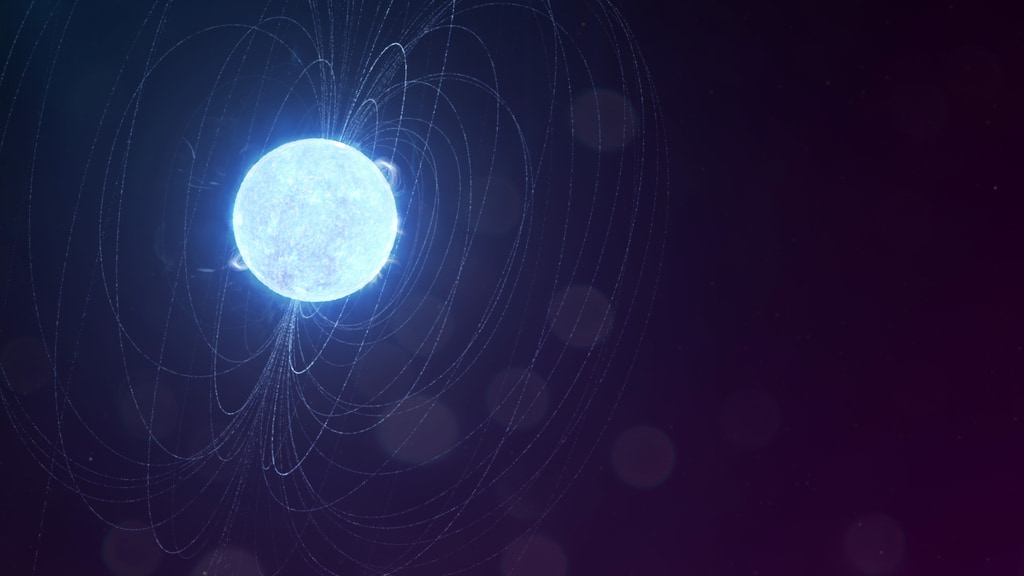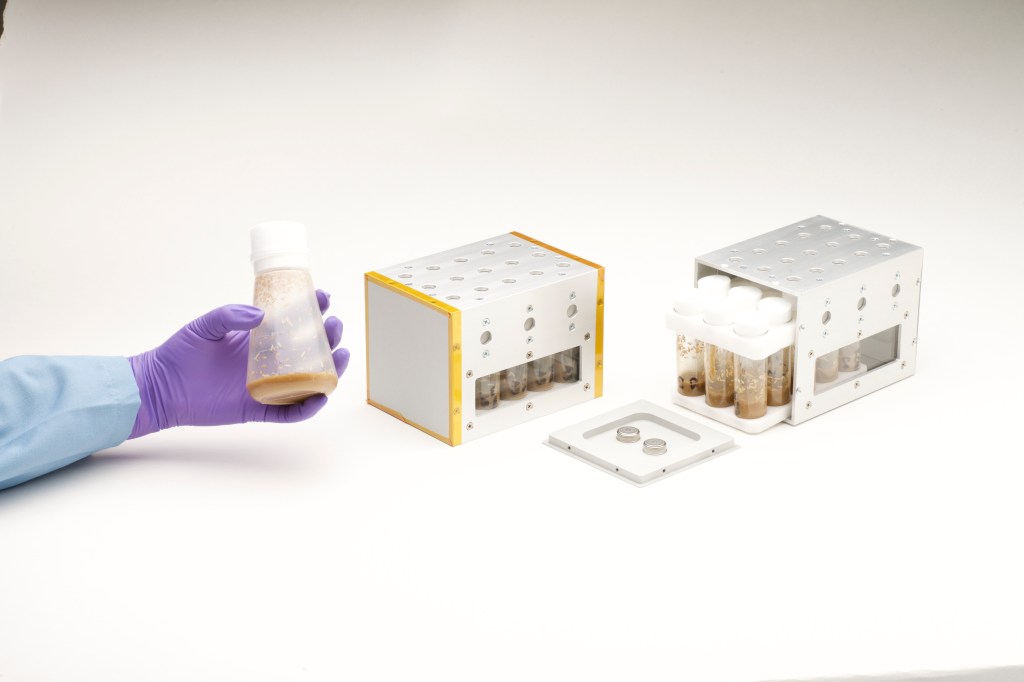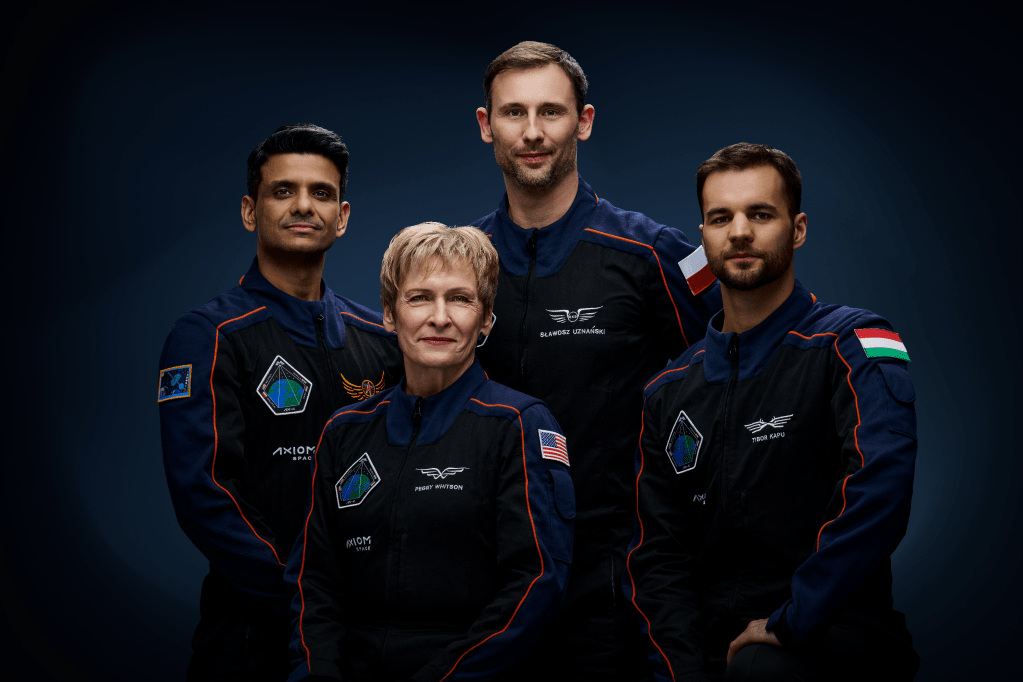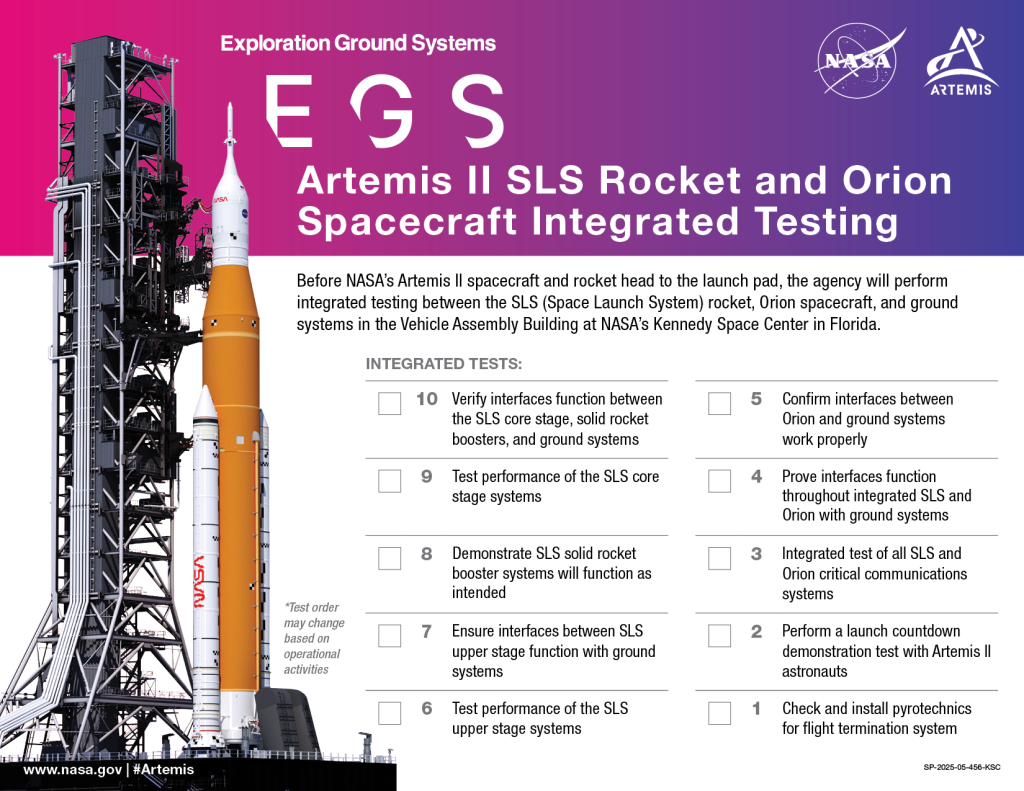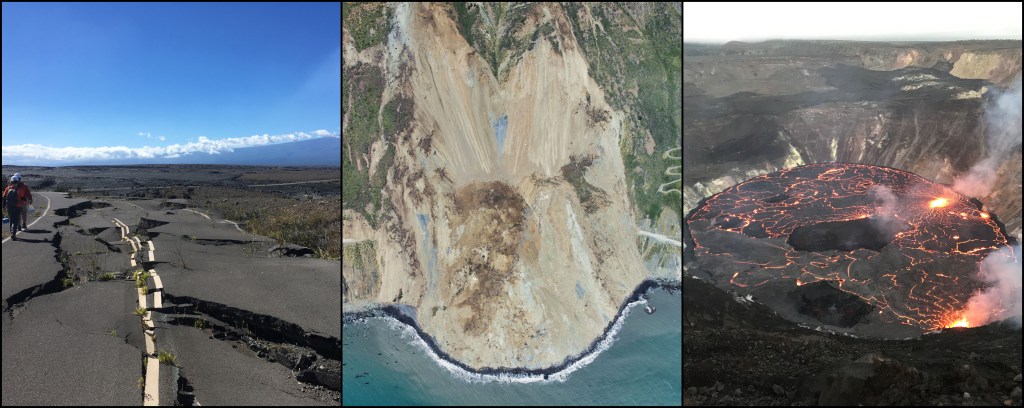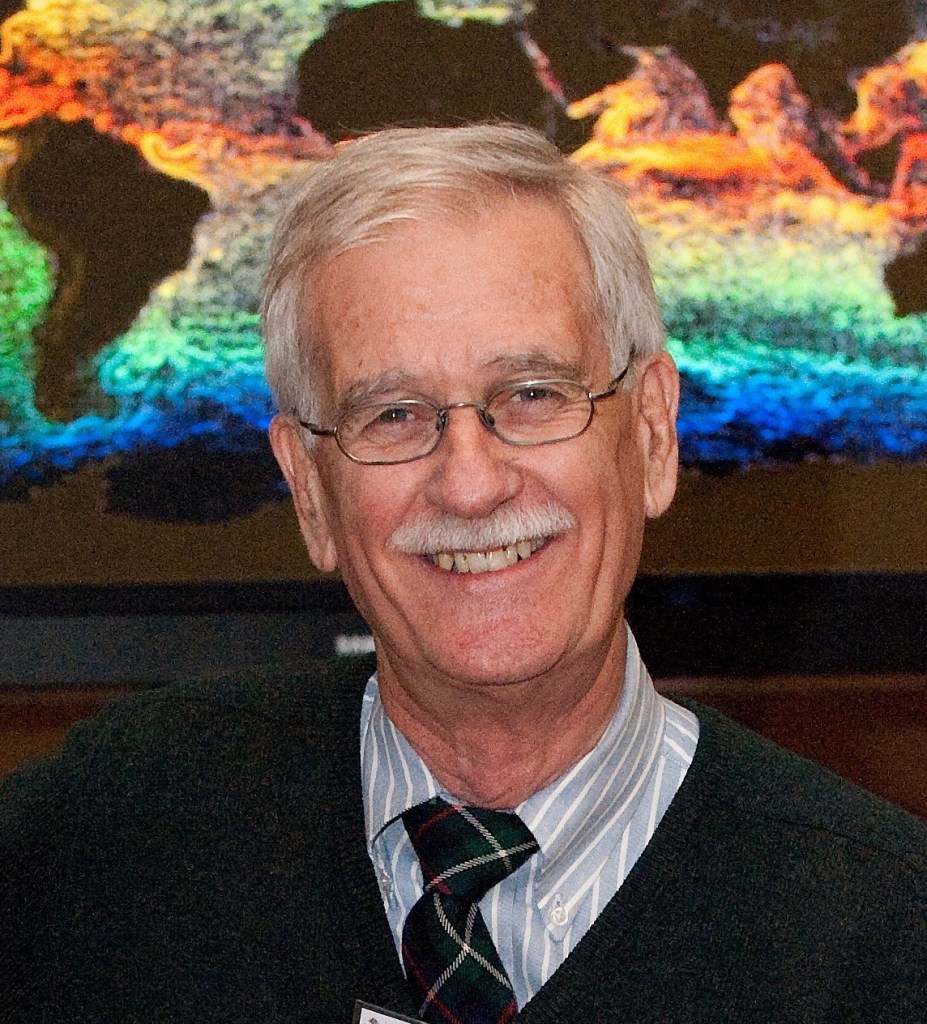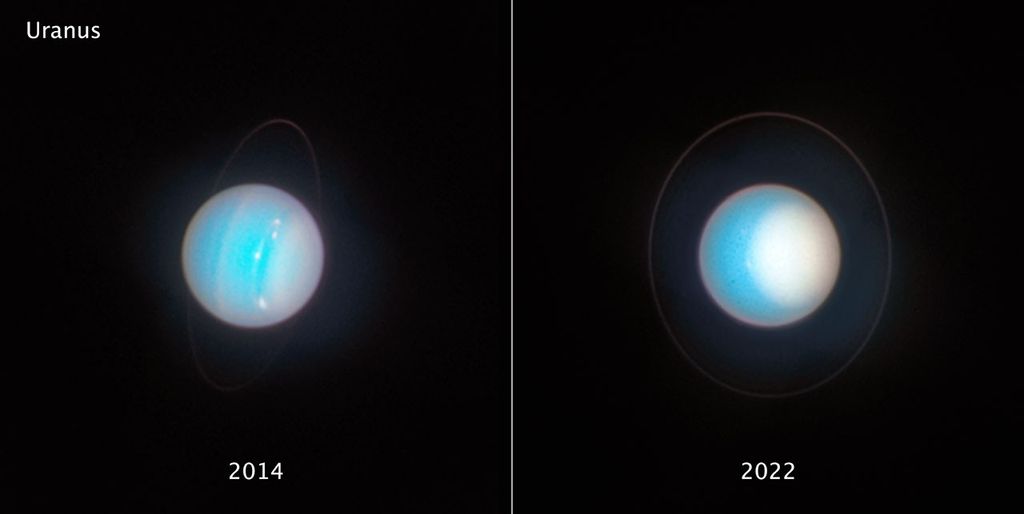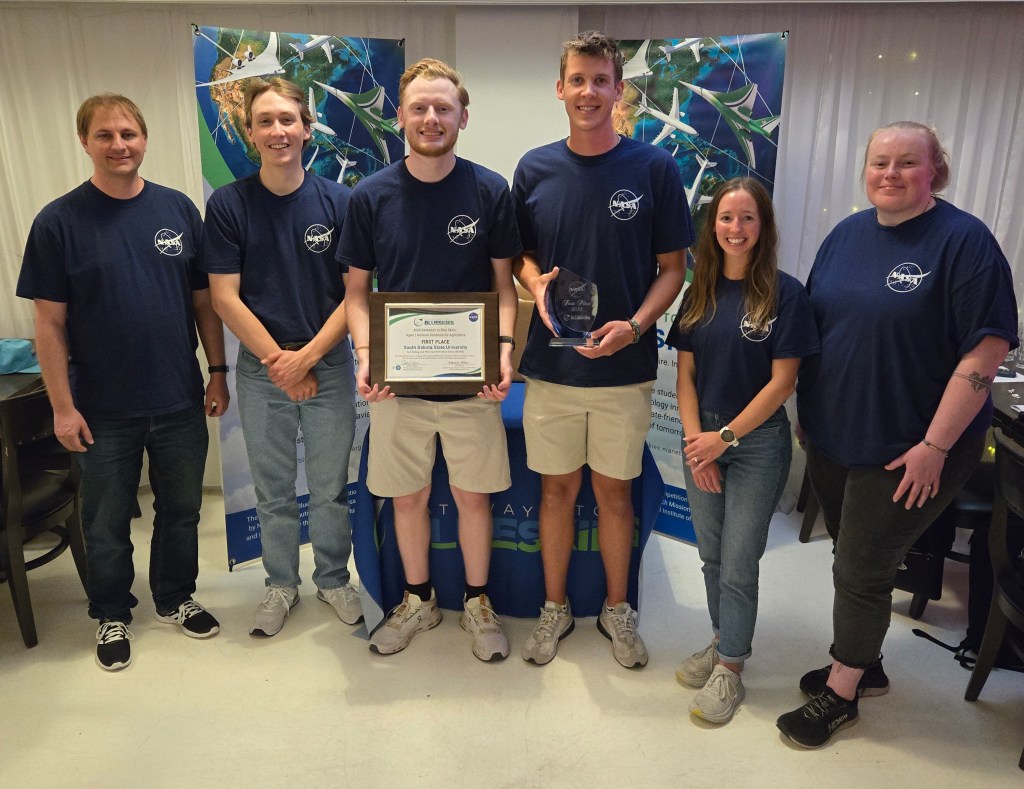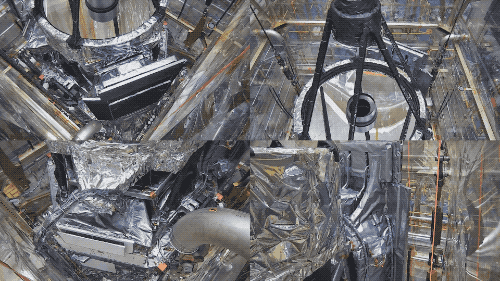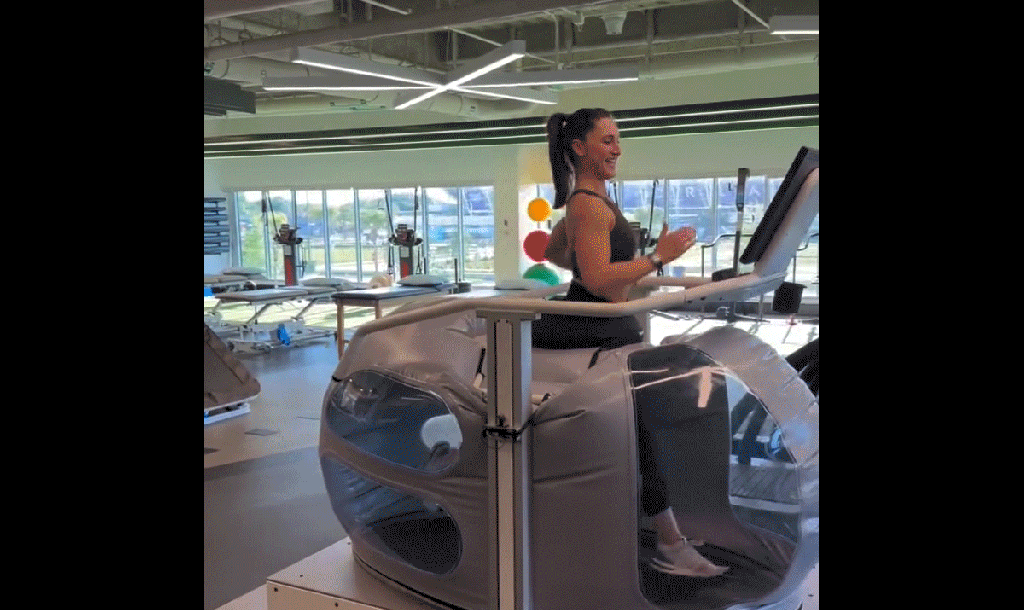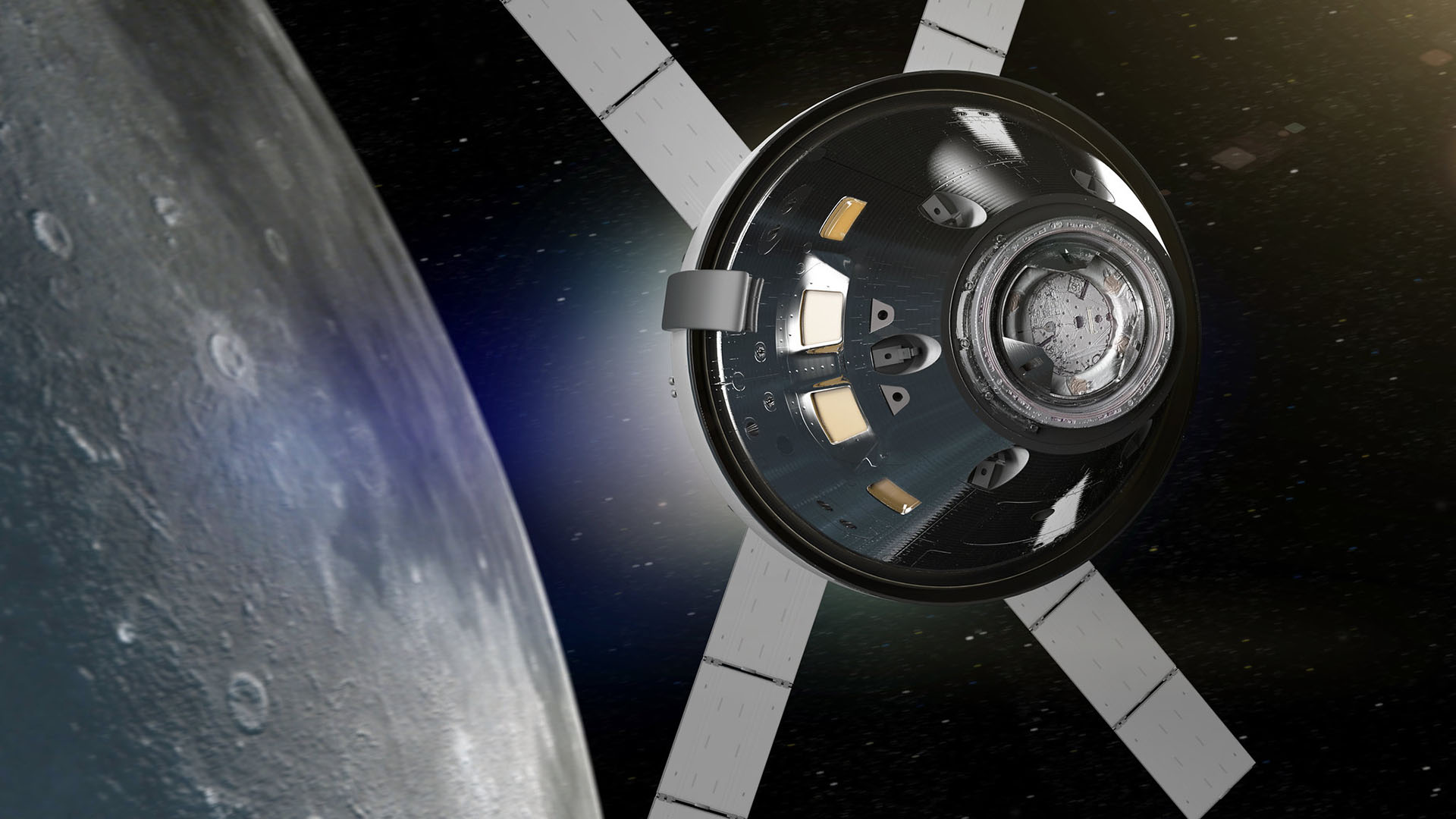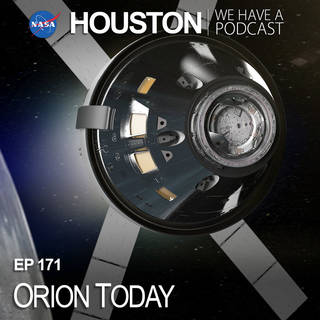
If you’re fascinated by the idea of humans traveling through space and curious about how that all works, you’ve come to the right place.
“Houston We Have a Podcast” is the official podcast of the NASA Johnson Space Center from Houston, Texas, home for NASA’s astronauts and Mission Control Center. Listen to the brightest minds of America’s space agency – astronauts, engineers, scientists and program leaders – discuss exciting topics in engineering, science and technology, sharing their personal stories and expertise on every aspect of human spaceflight. Learn more about how the work being done will help send humans forward to the Moon and on to Mars in the Artemis program.
On Episode 171, Howard Hu, Orion deputy program manager at NASA’s Johnson Space Center, gives an update on Orion, the spacecraft that will take the next generation of space explorers to the Moon and beyond. This episode was recorded on July 27, 2020.
For more Aretmis episodes check out the Houston, We Have a Podcast Artemis Page!

Transcript
Pat Ryan (Host): Houston, we have a podcast. Welcome to the official podcast of the NASA Johnson Space Center, Episode 171, “Orion Today.” I’m Pat Ryan. On this podcast, we talk with scientists, engineers, astronauts, and all kinds of experts about their part in America’s space exploration program, and today, we’re checking in on the development of the vehicle that will take men and women farther away from Earth than they have ever gone. It’s called Orion, and as the program puts it on its website, “For the first time in a generation, NASA is building a human spacecraft for deep space missions that will usher in a new era of space exploration.” That includes going back to the Moon in just a few years. Yep, this is the spaceship to make that trip, and we’ve talked about various aspects of Orion and its systems here on the podcast over the past three years. Today we get an update. Orion Deputy Program Manager, Howard Hu, has bachelor’s and master’s degrees in aeronautical and astronautical engineering. He worked in the space shuttle and International Space Station programs before joining Orion in 2007, and since then, he has worked on the vehicle’s avionics and power and software systems, on guidance navigation and control. He really knows this thing inside and out, and I got to spend an hour asking all the so-called “stupid questions,” so you don’t have to. Time to find out the latest about Orion. Here we go.
[ Music]
Host: I learned a long time ago in high school that all good arguments begin by defining your terms. So, you’ve been involved in Orion for years. Howard Hu, what is Orion?
Howard Hu:Well, Orion is our next generation exploration spaceship, or spacecraft. It is an exciting time for us at NASA certainly. We’re looking for lunar exploration and beyond, and Orion will take us there. And Orion’s comprised of really of three elements, three major elements. So the crew, I’ll start in the middle, which is the heart, which is where the crew sits, is the crew module, and four crew members will be able to sit in that crew module, and behind it is the service module, and it provides the major propulsion systems, the major power generation capabilities, and it also stores the water and oxygen that a crew needs for the exploration missions, and of course, very unique, you’ll see a Launch Abort System, which we put on top of the crew module and the service module, and that allows the crew to have abort capability when we launch from the pad, as we go into space. So, if anything happens with the rocket that is launched as a Space Launch System, SLS, launches us, there’s issues with the rocket, or we have some issues and the crew needs to get off the spacecraft or the launch vehicle, then the Launch Abort System, or the LAS, will be able to pull the crew module away and land the crew safely. So, three major elements comprise of Orion. Only one really goes — I mean, only two goes out in outer space, and of course, the Launch Abort System drops off when we head into deep space.
Host: And by deep space, we mean beyond Earth orbit? Does that mean just to the Moon, or even further than that?
Howard Hu:So, there’s a term called low-Earth orbit, or LEO. So, that’s where most of the current commercial space, and of course, International Space Station is at. Now when we talk about beyond LEO, you know, that’s going to the Moon, and then, of course, as we learn our capabilities and we explore the lunar surface, and we utilize the lunar environment as a launching pad, then certainly, Orion will be a spacecraft that we would use to go onto Mars. Now it will not be the only element of, certainly, Mars exploration. You’re going to need more modules and capability, because it’s a much longer duration, right?
Host: Yes.
Howard Hu: Seven days or so, five to seven days of travel to the Moon and, you know, two years, maybe, return trip, depending on your orbit, to Mars. So, the durations are significantly different. So, but Orion will be a big part of that piece, as well, as we go to Mars, and certainly, the first steppingstone for any deep space exploration, I think, is our plan to go to the Moon and learn from there before we jump to a bigger step.
Host: Yeah, I think you raise a good point, and let me get you to expand on it a bit. There are — we have spacecraft that are flying in low-Earth orbit right now. That’s not what Orion is designed for. Can you compare it to the current vehicles and how does it differ, and what kind of capabilities does it have?
Howard Hu:Yeah, so, Pat, you know, when you go deeper into space, the time frame is a little different. You know, you may be able to return quickly from low-Earth orbit, or LEO. And so, your ability to respond to failures or issues on the spacecraft is going to be significantly different. So, for an exploration-class type of spacecraft, like Orion, you know, we protect for redundancy, but more than just redundancy, we protect for what we consider may be off nominal or lessons learned we have done in the past, for example, manual switches. You know, manual switches —
Host: You mean like throwing it and up and down?
Howard Hu:The actual manual switches, right? Certainly, we are very much in a computer age, and great software computers, but the reliability is certainly very high and that we would, you know, test and ensure that the systems are good. But we have learned in the past that sometimes manual switches, manual capabilities, are another additional step, a different type of redundancy, that you may need to critical systems, like separating from the spacecraft. So, when we come home, we need to separate the crew module from the service module.
Host: Right.
Howard Hu:And the crew module returns the crew back and lands safely on Earth. And so, that step, you know, we want to have an ability to, obviously, separate. Same with releasing the parachutes. So, you want to have different paths to allow you to have that redundancy.
Host: More than one way.
Howard Hu:That’s more than just — yeah, more than one way to do something, and that’s one thing we’ve learned. The other things that you learn about when you go to deep space is, certainly, radiation has a big effect on the spacecraft. So, you want to be radiation tolerant. So, we’re very dependent on electronics. And so, you have to have a very robust test program for that, as well. And then of course, you know, the harsh environment, as you go out to deep space, you do not have anybody else to count on but yourselves in the spacecraft. You want to ensure all your systems are tested very well, number one, and to a level that is beyond what you think it will operate in, or what we think the environment will be in. And so, that’s very important from a spacecraft perspective. And then, the last thing is the ability for the crew to interact with the system. So, a lot of times, you can certainly for a shorter mission, like a LEO or low-Earth orbit mission, you know, you can sit back, and the automated system, it’ll do everything, and it’ll be fine. As I said, as you get further out from Earth and away from Earth, the crew sitting in a capsule needs to have more ability to interact with the system if the system doesn’t do or behave a certain way, or something happens where the crew needs to intercede much quicker. So, those kinds of manual control capabilities and manual ability to intervene are very important, and that’s designed in the system, as well.
Host: Pilot astronauts want to fly their ship. They don’t want to be taken for a ride.
Howard Hu:Yeah, and certainly, you know, they will be taken for a ride. A lot of the systems are going to be great onboard, you know, in terms of letting the crew, you know, do other things, but when something happens, or when you see something happen, you want to make sure the crew member and their brains are getting to interact and understand the situation, along with the ground, but certainly, they are the first-line defense. Their lives are on the line, and you want to give them the tools for them to really understand what is happening and be able to respond quickly.
Host: You’ve raised a number of points I want to circle back to, but in your describing the ship, I mean, I’ve seen enough pictures of it to know that to me, it looks a lot like an Apollo spaceship. The first American crewed vehicle that went to the Moon. Was that an inspiration in the general design of this, as opposed to, and particular of systems, but the Apollo capsule that worked so well, was that something that the designers of Orion drew upon?
Howard Hu:Yeah, Pat, great question. You know, our predecessors were very smart, certainly as, you know, 51 years ago, we landed on the Moon. So, they had great engineering, great designs, and, you know, you want to leverage off of what their knowledge and what their experience was, and a capsule is very efficient to return through a very harsh environment of reentry into our Earth’s atmosphere. So, when they designed that capsule, and they did a lot of work, they really understood the aerodynamics and the aerothermal behind something like that kind of blunt body shape. And certainly, that was not just an inspiration, but we had a lot of understanding and engineering data and information from that time period, obviously. And when we started looking at, at NASA, when we started looking at kind of the types of bodies that would be good to have those lunar reentry speeds or even return from Mars, what kind of speeds we would see when we reentered the atmosphere, a blunt body shape was a very good design from that standpoint.
Host: The bluntness here referring to the back end, the one that is leading through the atmosphere.
Howard Hu:Yeah, like a pear shaped, yeah, the bottom of it, the heat shield, is the blunt part of the body, and the ability for the spacecraft to be very efficient, to dissipate the heat when you reenter, is a really important thing, and if you remember, the shuttle had a little bit of wings, certainly not a lot, and we had to deal with a lot of tiles and things like that. Now that was a low-Earth return type of speed. So, it’s certainly less than what you’re seeing.
Host: You’re saying that Orion’s return will be at a higher rate of speed than the space shuttle was.
Howard Hu:Yeah, yes, yes, definitely. And so, that’s the difference, number one, and certainly, when you say, inspiration, I mean, we learned a lot from our predecessors. We’re taking advantage of that knowledge and applying it for future space exploration.
Host: How long has it been since Orion was — the idea came to build this vehicle?
Howard Hu:Boy, it started in the 2004-2005 timeframe when, you know, President Bush announced the vision for space exploration.
Host: Right, right.
Howard Hu:And the genesis of, hey, we want to return and build spacecraft that would go beyond low-Earth orbit. And so, that started formulating, but in our current program, the Artemis Program, you know, we’ve been working on it for several years, and certainly, the changing dynamics of kind of the direction where we’re going has evolved a little bit. You know, we were going to an asteroid at one time, but now, you know, we’re very focused on the Artemis missions of returning the first woman and the next man back on the lunar surface. So, very important national goals that have been called together over the last few years.
Host: So, Orion has been part of the agency’s effort even as the specific direction of that effort has changed over the course of more than 10 years now.
Howard Hu:Yeah, I think that’s the flexibility of the spacecraft, right? The mission, the ultimate end goal of the mission may change or evolve, but certainly, the requirement to carry the crew to those destinations, whether it be the lunar orbit, whether it be an asteroid or something different, you know, is the same relative to making sure that the crew has an environment that they can safely live in, that we can return them back to Earth safely, and that they can be transported from, obviously, lift off all the way to their destination. So —
Host: You’ve been part of the program for a long time, too, haven’t you? Tell me about your work in the Orion program.
Howard Hu:Yeah, I’ve been very fortunate, you know, to be with the program since the very beginning. You know, I’ve had opportunity to work on a lot of different things. You know, I started as the guidance navigation control lead for the program. So, the flying of the vehicle, the navigating of the vehicle. So, very important things, that certainly, I was very fortunate to be part of. And then, I’ve had opportunities to move up in leadership in the program, you know, both managing the overall vehicle integration and helping lead that. And then, prior to becoming the acting program manager, the deputy program manager, you know, I was responsible for all the avionics power and software on the vehicle. So, I’ve been able to touch lots of big areas on the spacecraft. I was fortunate to see a lot of different things and be part of a lot of the successes we’ve had so far. So, really happy to be here and contribute.
Host: I understand you worked in other programs here even before Orion. So, your background in human spaceflight goes back even further, right?
Howard Hu:Yeah, I may not — maybe I shouldn’t tell how old I am, but certainly, I’ve had a lot of years at NASA. I was very fortunate, like I said, you know, not to be only in Orion, but I started my career in the International Space Station at the very beginning. Saw the first, worked through the first few elements of the International Space Station, and then, I was able to work on the upgrades to the space shuttle. And so, I was able to touch on our two major human spaceflight programs. Saw a lot of, not only, the beginning of the International Space Station, but the operational vehicle and trying to upgrade an operational vehicle like the space shuttle. And then, of course, that I came onto Orion and deep space exploration.
Host: Let’s talk about Orion in some more of the details, in the different things. When you get to talk to people about Orion, what do you find to be the highlights that people get very excited about when you describe these aspects of the vehicle?
Howard Hu:Yeah, you know, I think a broad spectrum of things, when we talk about excitement first, you know, when I think about Orion or talk to people of Orion, you know, we’re building a long-term space exploration vehicle, you know, a vehicle that can evolve, number one, but also support the missions in a long-term, not just the one mission or two-mission type of vehicle, but we’re really looking at the long-term for NASA and space exploration. So, that’s really exciting. So, not only are we trying to fly as soon as we can, but we’re also looking at the long-term of what we can do as a spacecraft capability, but also to try to manage our costs, so that it’s affordable long-term and that we can do a lot of different things for exploration. So, that, at a global level, is very exciting.
Host: Yeah.
Howard Hu:I think the second thing is just the technologies that we’re embedding into the spacecraft relative to how the crew engages. You know, we are really advancing the next generation of crew interaction with the systems, not through displays, through controls, how we do automation. How does the human interact with the automated system? What are things like I talked to you about earlier, relative to, you know, crew interaction, crew manual control, crew engagement in certain problems, how we do those things where today we can rely a lot on automated systems, software. We live in a software, you know, computer age, right?
Host: Sure.
Howard Hu: So, but to blend that human piece in is really a new thing, a new thing relative to what we’ve done in the past, and I think that’s really exciting going forward, and then, of course, we’re doing a few things differently relative to battery technology, navigation technology. So, those are really exciting things I’ve talked to people about where we’re advancing that state-of-the-art with, you know, the commercial providers, as well, because that’s what we’re going to need in the future, because communication is very important when you’re further out and even further out to Mars, right? So, one of the things, you know, we’re doing is looking at those communication technologies, and of course, you know, docking with the vehicle, rendezvous with other spacecraft, is going to be very important in space. And so, we’re advancing those kinds of navigation sensors, what we call relative navigation sensors. So, everybody’s heard about GPS.
Host: Right.
Howard Hu: We use it every day, right. So, but you don’t have GPS when you leave the Earth. You don’t have that kind of consolation of the satellites. How do you navigate?
Host: That globe. That globe’s no longer important.
Howard Hu:Right, so, you can’t use your iPhone and go, hey, I want to go from here to here. So, you’ve got to have other ways to navigate. So, we’re looking at that, but also, you have to navigate together with two spacecraft, and that’s called relative navigation, and that technology, we’re advancing. In fact, I was — I got an opportunity to lead an activity within the shuttle. We went out and did a, what do you call it, a flight test, with a technology called lidar.
Host: Lidar?
Howard Hu:Yeah, laser — it’s a laser-based system. A laser-based system basically, using for relative navigation, and it was called STORRM [Sensor Test for Orion Relative Navigation Risk Mitigation], and so, we did that work. We mounted a lidar system on the space shuttle in payload bay, and we did a test with the space station to determine kind of what the capabilities are for lidar technology at that time, and it was the second to last mission of the space shuttle. So, very exciting that we were able to do that. Now we’re going to apply that technology into our spacecraft as our relative navigation sensor. So, we’ll be doing that. So, we’re advancing not only just things that we started doing, what others have started doing, but expanding upon it, the ranges and the environment that we’re going to see for these kinds of sensors are going to be really important.
Host: Let me ask you. You talk about relative navigation of these vehicles because GPS is no longer relevant to you, but what is? What do you use as a reference point in a relative navigation system like that for Orion or the other vehicle to know where they are?
Howard Hu:Yeah, you know, two types of things that you use. Traditionally, you have an S-band or RF, radio frequency technology, for very, very far distances, and then, when you get closer in, you know, about two kilometers, you know, something like that —
Host: During a docking —
Howard Hu:During a docking maneuver. Then that’s when the lidar takes over. And so, the ranges for where the lidar is very effective, we are expanding that range and that distance. And so, we’re counting on lidar technology, you know, to get us the rest of the way in, as we get closer to the other spacecraft. So, that’s one of key pieces of technology.
Host: For the two vehicles to then, to bounce the signal off. I don’t know if they bounce.
Howard Hu:They do, yep.
Host: That they bounce off one another in order to gauge their distance and the rate at which they’re getting closer.
Howard Hu:You got it — you’ve got it, yeah.
Host: It’s always good to have something to fall back on.
Howard Hu:[Laughter] Yeah, so you have a laser, and it goes to a reflector, and it gives you a return. And so, different types of, you know, I won’t get into it here, but certainly, that technology has been there. A lot of uses commercially. Some people have thought about using lidars for, you know, autonomous driving, things like that. I think they’re using it today in the vehicles. So, lots of different types of commercial applications for us on Earth, and it’s certainly very important for us when we do rendezvous prox ops and docking on orbit with another spacecraft and using that type of technology to tell us not only how close the vehicle is, but, you know, relative attitude. Where is it relative to myself in this spacecraft, in Orion?
Host: Is it right to say that all of that is part of the docking system, the larger system or systems that are required for two vehicles to link up in space?
Howard Hu:Yeah, relative navigation is very important, is one system that is really important. So, it’s part of that system that you talked about. So, obviously, a docking mechanism is part of it, and then you also have to be able to fly the vehicle, which normally you can already control whether the stick or the software does the flying, basically pulsing the jets.
Host: Right.
Howard Hu:If you can think of that, that way. All those pieces together have to work in combination to make that “system” to be able to perform the overall capability, which is to, you know, connect with another spacecraft.
Host: And Orion still has those aspects of it where a commander of the vehicle is able to manually fly it, and it has mechanical interfaces for it to link up to some other vehicle?
Howard Hu:Yes, yes, so, that’s why I said earlier, you know, we are designing both an automated approach, and the crew can have the ability to do a manual, right? So, sometimes the human brain and the human ability to respond to the scenarios are much better than the computer or the software we built. And so, we provide two paths. Normally, you can go automated rendezvous and docking, and then the crew can certainly take over at any point, and either continue the mission or stop it and wait and see what happens, relative to maybe issues they come up with, or they just need to wait and pause to make sure they got it right. So, there’s a lot of different kinds of options, and I said earlier, you know, this is why we’re building this capability, because you’re far away from returning home or you’re far away from, potentially, ground support if you don’t have the communication capability. And so, you want to make sure the crew has the most options to be successful in the mission.
Host: Tell me about the space for the human crew members. You said earlier that this would accommodate four people, right? How much space is there for them? What accommodations do you have for the human part of this machine?
Howard Hu:Yeah, it’s — you know, I’ll be honest with you, it’s certainly tight, you know, relative to what we would normally expect. You know, they — boy, how would I describe that? We have a capsule, 17-18 feet wide, something like that.
Host: Right, right.
Howard Hu: And so, you can think about if you try to fit four people into that arena.
Host: Are they all side-by-side?
Howard Hu:Well, when you’re in space, you’re floating around. So, you’re maneuvering within a, if you think of cylindrical shape, with a blunt body on the bottom.
Host: Right.
Howard Hu:So, they’ll have opportunity. But when they’re launching, the seats are two and two. So, if you imagine two people above you and two people below you. So, certainly in launch and reentry configuration, they would be sitting, but on orbit, they would be able to go wherever they need to go. Boy, I would say that maybe, you know, in general, you probably have two or three feet, you know, as a cone, if you want to call it, around you, as you maneuver around. Now certainly, certain areas have a little bit more limitations. Other areas have a little bit more maneuvering room, you know?
Host: How do they sleep? How do they eat? What sort of systems do we have for just, you know, for being a human being?
Howard Hu:OK, they can sleep anywhere. So, you know, there’s no orientation. If you ever see what the crew does in the space station, they can sleep anywhere. So, they have sleeping bags and accommodations to sleep. You know, they’ll have the normal things. Like, they’ll have a toilet. I think everybody asks. So, we have an advanced toilet we’re building. In fact, we’re testing it out on the space station. So, there’s going to be a lot of tests and understanding of the capabilities of that. From a food perspective, you know, they have a wide range of food that they normally have would have on space station, and they’ll be able to warm it, have warm food, and they’ll have, you know, the regular things. Now it won’t be as luxurious as some of us would, you know, not a five-star hotel, certainly. Going to space is challenging, but they’ll have all the regular accommodations relative to food and water.
Host: In the case of a trip to the Moon, you’re not talking about an extremely long trip. It’s a matter of a few days, right?
Howard Hu:Right.
Host: So, it’s not that hard. If you’re going to get to go to space for a few days, you can rough it, so to speak.
Howard Hu:Yeah, yeah, and we try to balance. There’s a balance, right. Certainly, we have the technology, and we built in some capabilities, allowed the crew to have some, obviously, meals and such and the ability to have some creature comforts, as we go forward, because we’ve learned a lot from space station, right. When we started with food in the shuttle and space stations, it’s different what we’ve —
Host: Than what we have now.
Howard Hu:Yeah, we’ve increased. And so, I think it’s so really, you know, again leveraging things that we’ve learned and applying those things that make sense. Like you said, it’s a shorter mission. Certainly, going to Mars will be much longer, and we’ll have different kinds of accommodations, but certainly, Orion does provide what’s needed in the short term for these types of missions right now.
Host: You’ve mentioned that people always ask about the toilet, and they do. What is advanced about the toilet that you’re working on for this that people would want to know about?
Howard Hu:Boy, I haven’t experienced it myself, because I haven’t used the toilet. So, I couldn’t tell you, but what I’ve heard, or what had been told to me by the astronauts is that it’s more accommodating of females.
Host: Oh, OK.
Howard Hu:The design, and that’s all I get into it, and that’s about as much I know. But that’s one of the advances that, I mean, in terms of learning from our previous designs, how we can accommodate the broader variety of people, and certainly, we’re going to have a variety of individuals who are going to go to the Moon, right. So, giving them that ability, I think, is really one of the big things that helps, in terms of their quality of the mission, let’s say.
Host: Yeah.
Howard Hu: And so, I think that’s one of the big things.
Host: It’s an important part of the middle part of the mission. You’ve also touched on aspects of the beginning of the mission, in terms of the launch, which is on the Space Launch System, but Orion comes with the Launch Abort System that you’ve made reference to. This is another rocket, really, isn’t it?
Howard Hu:The Launch Abort System, yeah, you could consider it a rocket, because it’s got solid motors. It’s actually got three sets of motors on the Launch Abort System, and with the crew module attached, it does look like a mini rocket, and it does behave, because we have to pull the crew from whatever’s happening in the situation underneath them, and we have to pull them out quickly. And so, you know, initially the abort thrust is about 400,000 pounds of thrust that we pull the crew in in about one and a half seconds. And so, we pull them away pretty quickly, and we want to ensure that, obviously, whatever’s happening, they are able to get away from that. And so, you can imagine whatever scenarios there may be, whatever situation you’re in, it’s kind of like an ejection seat, right. You want to get away from the situation that was back there fully away, so that there’s nothing that can affect —
Host: That’s a big, controlled explosion that’s going on —
Howard Hu:Could be. Could be.
Host: — behind them that they need to get away from.
Howard Hu:Yeah, or the rocket is just accelerating, and you don’t want to be right in its path, right. So, a lot of different things that could happen, and you want to ensure that you could get away quickly.
Host: At the end of the mission, there also is a pretty elaborate parachute system, in order to bring it back. You talked about the need for the Orion to make its way through the atmosphere, but once it does that, it’s got to continue to slow down as it heads to land in the water. I’ve always thought “land in the water” was kind of a weird phrase but tell me about the rest of this system to bring the mission to an end with the parachutes.
Howard Hu:Yeah, we have three major parachutes that deploy. In fact, we have parachutes that actually slow down the spacecraft first a little bit, and then, it pulls out the main chutes coming out behind it called drogue chutes that pull the main chutes out. And so, the system is three big parachutes, and of course, like you said, we’re trying to touch down softly, and we’re trying to touch down in a very controlled area, really, right now, off of San Diego, because then the U.S. Navy can go recover the crew and the ship. You can imagine, we would not want the crew sitting in the ship for very long on our spacecraft if you’re bobbing in the water.
Host: Riding the wave.
Howard Hu:And they, of course, have felt some effects of being in space. So, we certainly want them extracted as soon as possible. So, accurate landing is very important and that ability to land accurately. You can place recovery forces near that so you can recover them faster. Now certainly, we have the ability to have contingency. If something happened, they need to come down somewhere else. That is also possible, as well. So, lots of different kinds of things that we protect for the landing itself, and of course, like I told you earlier, on the chute deploy, you know, we have like the manual switch for deploying the chutes, right. That’s very important. The crew can fire that switch if the automated system doesn’t do it.
Host: Doesn’t work, right.
Howard Hu:Now, normally, the automated system will be fine. It’ll do it. The crew will monitor it. If, for whatever reason, it doesn’t trigger, then the crew has a way, and they can deploy the chutes, and they’ll be able to land safely.
Host: The program has had a number of, I mean, there are, as you develop these systems, you are doing all kinds of testing to make sure that it’s working before you get too far. You make sure, incrementally, as you work along. Tell me about some of the real big testing milestones that you’ve been through on these various systems to know that we’re working in the right direction and that things are working as they’re supposed to.
Howard Hu:Yeah, wow, we just finished up two major tests this year. We just recently finished up what we call structural test article. So, we subject an identical vehicle structurally to Orion, both the Launch Abort System, the crew module and the service launch, the whole stack, and we test a lot of combinations or configurations of that structural test article, depending on the flight configuration, right. So, you’ll have the stack together. You’ll have the crew module by itself, you’ll have a crew module, service module together. So, that test, tests out the ability for the structure to withstand a very heavy vibration environment, very heavy shock environment. So, that’s the test I talked about —
Host: Like they would undergo at launch?
Howard Hu:Undergo at launch, but above that, to levels above that, because we always tests levels above it, such that protect for if you aren’t — you didn’t model something correctly, so that you make sure you have a test program that really wrings out your system, the actual system that you’re going to fly, right. So, that is the whole idea of the structural test article. And then, for Artemis I spacecraft, we took that spacecraft to the Plum Brook Station out in Sandusky Ohio. There’s a big facility there that does testing, thermal vacuum testing and some EMI/EMC [electromagnetic inference/electromagnetic compatibility] testing.
Host: That’s at the Glenn Research Center.
Howard Hu:Glenn Research Center, right, outside of the Glenn Research Center. So, we went there, and we finished that up in March. That was what we considered the environmental test, So, we took the entire spacecraft, not the Launch Abort System but just the crew module/service module, and we put it in a thermal vacuum chamber, and we tested the environment that we would see in space, and we subject it to that kind of level environment, and of course, above that, that we would see, and it passed with flying colors. The spacecraft that we’re going to fly.
Host: Not a test article.
Howard Hu:Not a test article like the structural test article that I described earlier, but the actual spacecraft, Artemis I spacecraft. And so, that was a huge success for us. It was almost a four-month test, and it was nonstop, every day, 24/7, we were running it. And of course, we were subjecting it like we would do in flight. So, again, just looking at the flight regime, not only the levels, but the continuous types of testing.
Host: And this is just for vacuum or other aspects of the environment?
Howard Hu:That was just for the vacuum and the temperature.
Host: Oh, OK, yeah.
Howard Hu:Right? The temperature variation, of course, in vacuum, and then you have the hot and cold cycles that the spacecraft would go, because depending on where the sun is relative to where you are, right. There’s also that dynamic range of temperature that you see in space that everybody, I think, knows about. So, we’re testing that, as well. So that was a very important test for us to show that our spacecraft can operate, and when I say operate, that means we were operating, controlling the temperature inside the cabin. You know, it was like a 65 degrees inside, where we were minus 200 outside, you know. So, showing that the vehicle is operating normally. The software was running. All the computers were up. The thermal control system was working. So, demonstrating, basically, a mission on the ground to the environment that you would see, and that was a very good testament to the quality of the vehicle and our ability to be ready to fly. And so, that was a really good test.
Host: Cool. What other sorts of tests? You’ve done tests with the Launch Abort System, with the parachutes, and tell me about what some of those other ones are.
Howard Hu:And of course, so, this is this year, and then last year, we had a really big, important test. It was this AA2.
Host: That AA was —
Howard Hu:Ascent Abort, Ascent Abort II, and that test demonstrated our Launch Abort System capabilities. Remember I told you about LAS, right. That’s a very important element for crew survival, and of course, a very dynamic environment. I told you 400,000 pounds, one and a half seconds of immediate getting off the stack or the rocket. So, we had a very successful test in Florida on July, I think 2nd, if I remember correctly, and very good for the program to demonstrate that our Launch Abort System is operated exactly as we predicted and was able to successfully pull the crew module off and reorient and bring the crew module back. So, that was a really important demonstration of our Launch Abort System in a full-scale test.
Host: So good examples, we don’t need to talk about every single test that you have ever done, but a good example of testing that’s underway as you continue to move down the path, I mean, NASA’s talking about putting boots back on the Moon by 2024. That’s going to take a couple flights to get to there, right? So, let’s look forward from where we are right now. What are the next big steps for Orion as you move toward that goal? You’ve made reference to Artemis I. That’s not the one that lands, though, right?
Howard Hu:Right, well, just to be clear —
Host: Or that puts people down, I’m sorry.
Howard Hu:Orion doesn’t land.
Host: Orion doesn’t land.
Howard Hu:Yes, Pat, yep, yep, good. You caught that. So, Orion, you know, we’re a transport vehicle, and we take it to the destination. And of course, the lander will land people on the Moon, but exciting things are happening. We’re wrapping up the Artemis I vehicle. When I say wrapping up, we’re doing final assembly, and there’s a couple of steps that you do at the very end, which is you put solar arrays on, and you pressurize your system, your helium system, that provides pressure to the tanks, the prop, and the oxidizers. So, very important steps, and that’s what we call wrapping up the vehicle. So, we should get that done, and then, we will then transport or transfer the Orion vehicles, the crew module, the service module, the Launch Abort System. We hand that over to our ground team, which is the Exploration Ground Systems program, and they are actually going to stack us on top of the Space Launch System. And so, that’ll happen next year, and then, we’ll be ready to launch. So, all the heavy lifting or heavy work on the Orion program side will be done. We’ll have that vehicle buttoned up and ready to go. Our test that we talked about demonstrated that we’re ready for flight. We’ve got a few things to wrap up on the vehicle side itself, and then, we’ll accept the vehicle, and then we’ll hand it over to our partners in the other program, and then, they’ll do the stacking for us.
Host: Before we get too far, or any farther down that road, I don’t want to forget other partners that are involved. NASA’s building this vehicle in conjunction with the European Space Agency and with other companies, right?
Howard Hu:Yeah, I forgot to mention at the very beginning. You know, the service module, a big part of the service module, is being built by the European Space Agency with their partners, Airbus. And they are the ones that are responsible for providing that element to us, and a very important part. So, the power, the propulsion systems, the tanks that store the oxygen and the water for us, very, very important part of the spacecraft and a great partnership that we’ve had with the Europeans. And then, now we’re going to fly together as one single spacecraft. So, they’ve done their part. The Europeans have delivered the Artemis I service module.
Host: OK.
Howard Hu:Their contribution. We put it together, and I said earlier, we did the testing as the crew module service module. So, everything’s working very well, and then, the final steps are being done. So, very important partnership that I forgot to mention early on and I’m glad you brought it up.
Host: And they based their design on flown vehicle, on their cargo ship that they flew to the International Space Station.
Howard Hu:Right, the ATV, or think I it’s called Automated Transfer Vehicle. So, when they joined us back in 2013, you know, that was, when you talk about inspiration or, you know, leveraging their past, you know, they started with that design and that experience base, and that’s where our current European service module element evolved, and that allowed us to leverage their experience and knowledge of the ATV design and flight experience and apply it to Orion.
Host: And the Orion vehicle itself is being built in partnership with private companies.
Howard Hu:Yes, certainly, you know, NASA is a leader in terms of building Orion exploration spacecraft, but we count on our prime contractor, Lockheed Martin, who is responsible for integrating all of those pieces that I talked about, the service module, the crew module, the Launch Abort System, putting it all together and getting it ready for us to make sure, as an integrated spacecraft, it’s working. And of course, they’re the ones, also, for doing the design of the crew module and the Launch Abort System. I told you earlier, the service modules is the European. So, they’re responsible for those pieces and they’re responsible for integrating this whole spacecraft. So, they’re very important partner for us, and they’re our prime contractor, and certainly, done a great job of pulling the Artemis I vehicle together.
Host: So, you mentioned a minute ago that Artemis I vehicle, you’re getting ready to deliver it to Florida for the people to put it in the stack to get ready to fly that first mission. What other things should people be looking for? What other kind of tests or development activities does Orion still have in front of it before we get to actually fly the vehicle?
Howard Hu:Yeah, for Artemis I, our major test program is done, like I said. Now we will be doing things on the stack itself, you know, with the rest of the spaceship. Well, I’ll say it differently, with the launch vehicle, OK. And we’ll be doing some preparation for launch. We’ll do some checkout systems where we power on the system. So, very nominal kinds of things to get to launch, but nothing significant like we’ve done in the past with the structural test article or with the environmental testing at Plum Brook Station. Nothing at that magnitude for us for Orion. Now, we certainly have tests ahead of us for other things but not for Artemis I.
Host: And I’m assuming that you, at some point, you’re going to have to have everybody do an awful lot of practice with the launch vehicle, do simulations, and that sort of thing, because it’s something that you haven’t flown before.
Howard Hu:Yes, this is true for, you know, previous human spaceflight programs, and they’ll be true for Orion.
Host: Sure, and it makes all the sense in the world.
Howard Hu:Yeah, yeah, and we’ll have simulations, and in fact, we’ve already done testing with the ground software. For those who aren’t familiar, you know, ground team will take over. They will stack the vehicle, but not only will they stack the vehicle. They have ground software that actually interacts with our spacecraft software. So, that interaction, we’ve tested also, as well, with the ground team, but we’ll also participate, as they power up on the spacecraft. So, they’ll have ground systems that actually interacts with our spacecraft systems, and they’ll get data, and they’ll get command and control capability on some of the systems. And so, we’ll be involved in that going forward, preparing for that, not just simulations but actually processing getting the vehicle, basically, powered on. So, we’ll be a big part of that. And of course, during launch day, we’ll all be there, and we’ll be supporting from our various facilities to make sure that everything, all the systems, look right, and the spacecraft is ready to go, and we get the launch team to go. And then, of course, the launch team hands it over to our flight operations team here at Johnson Space Center, and they take over once the vehicle lifts off.
Host: We’ve referred to Artemis I flying, target to launch in 2021. Give me the thumbnail sketch of what happens in Artemis I, and then Artemis II and Artemis III.
Howard Hu:Yeah, so, Artemis I is our first mission to lunar orbit. It’ll be a very exciting mission. You know, it’ll vary 26 to 40 days, depending on when we launch and exactly, you know, the type of missions we’re going to — that type of mission we’re going to decide to fly. So, that’s going to be a very long mission. So, we’ll really check out the systems that we’ve got. Great for us to understand the environment and what our systems do in that environment. So, that’s Artemis I. And then, right now, we’re working on Artemis II. So, it’s not we’re waiting for Artemis I to complete and then work on — you don’t have time. So, as we’re buttoning up Artemis I, we’ve already made significant progress on Artemis II. In fact, at KSC is where we put the Orion spacecraft together. We have both — we’re finishing Artemis I. In another bay, we have Artemis II, where we’re outfitting all the systems and testing it. So, things are going in parallel, and in fact, next year, not only will we be getting ready to launch Artemis I, we’ll be trying to wrap up — the ESM is going to show up, the European Service Module for Artemis II will show up. We’ll be putting that together with the crew module. We’ll also start some work, also, Artemis III. So, all these things will be going in parallel, different stages of development and assembly, but all in parallel. It’s a really exciting time, because that’s what it takes. That’s what it takes for us to make sure that we’re going to meet the schedules that we need to do to get boots on the Moon and making sure that we’re doing things in a flow, and it’s a flow, Pat and that flow has been established, and we just walk that flow, and it’s an exciting time for us.
Host: I know it’s not your job to do it, but when are they going to assign astronauts who are going to fly in Orion?
Howard Hu:Yeah, I don’t know the exact time frame. You know, usually, I think the template’s maybe two years, something like that.
Host: Two years before the launch.
Howard Hu:Before launch, yeah. So, I can’t tell you. Don’t quote me on that, Pat, but I think it is somewhere around that time frame where they assign the crews. But the time frame may have changed depending on, you know, what the agency decides to do.
Host: And would it be essentially the same Orion vehicle that flies missions to the Moon that then, in subsequent years, will fly missions to Mars?
Howard Hu:I hope so, because I think, like I said earlier today, you know, one of the things you asked me earlier, you know, what do I tell people? I think, you know, the program and our thought process is to establish a vehicle that allows us to operate for a long time. And there will be evolution. There will be obsolescence.
Host: Undoubtedly.
Howard Hu: There will be things like that, but basic vehicle, I mean, that’s what we want to make sure we are building a vehicle that allows us to have long-term exploration capability, right. And that is a testament of time, and my desire in our — the way we operate is to think about that, as well. So both, not only meeting the missions of today, but also, making sure that we’re able to meet missions in the future, and that vehicle is sustainable for that long-term, and there doesn’t need to be that many changes, and there shouldn’t be, because I think we’ve thought through it, and we will learn, and we will evolve, and we will update as necessary. Certainly, we won’t have it perfect, but in general, I think the spacecraft today that we’ve designed will be able to last us and carry us forward in the future.
Host: And it sounds like you’re pretty ready to go.
Howard Hu:We are ready to go. We’re excited. We’re, like I said, you know, we’re near the end of wrapping things up. It’s like a, you know, I had my kitchen done recently. You know, you can see the very end of it, and you’re very excited to get back and get your kitchen back. It’s the same thing for us, a lot of us who’ve worked on the program for a long time. You know, it is a very exciting time, because we know, you know, we’re ready. You know, like I said, our testing program is complete for Artemis I. We are very close to wrapping up the spacecraft, and then now, the next step is we’re looking for our friends over at KSC to put it together, and then we’ll be working with them to get ready for the launch and get into space. It’ll be very exciting.
Host: Yeah, it will. Thank you. Thanks very much for bringing us up to date.
Howard Hu:You bet. You bet. Thank you for having me.
[ Music]
Host: You are probably aware that the International Space Station has been hosting a brand-new spacecraft, SpaceX’s Crew Dragon finished its first flight with astronauts onboard this summer. Boeing is progressing with its ship to fly to the station, and there are other commercial companies building spaceships, too. Don’t forget Orion. This is the vehicle that will carry astronauts beyond low-Earth orbit for the first time since the 1970s, a time you may not even remember. Along with supporting the Artemis program efforts to return to the Moon, where we can learn to live sustainably off of our home planet, it will play a role in moving us out into the solar system to Mars and other destinations. You can keep up with the latest online at NASA.gov. Search for Artemis and moon-to-mars. I will also remind you that you can go online and keep up with all things NASA at NASA.gov. It would probably be a good idea for you to follow us on Facebook, Twitter, and Instagram, too. You will thank me. When you go to those sites, use that hashtag #AskNASA to submit a question or suggest a topic for us. Please indicate that it’s for Houston We Have a Podcast. You can find the full catalog of all of our episodes by going to NASA.gov/podcasts and scrolling to our name. In fact, you can find all the other exciting NASA podcasts right there at the same spot where you’ll find us, NASA.gov/podcasts, very convenient. This episode was recorded on July 27, 2020. Thanks to Alex Perryman, Gary Jordan, Norah Moran, Belinda Pulido, and Jennifer Hernandez for their help with the production, to Laura Rochon and Rachel Kraft for their help in arranging the guests, and to Howard Hu for sharing the terrific story of how NASA is moving ahead to build humanity’s next moonship. We’ll be back next week.





